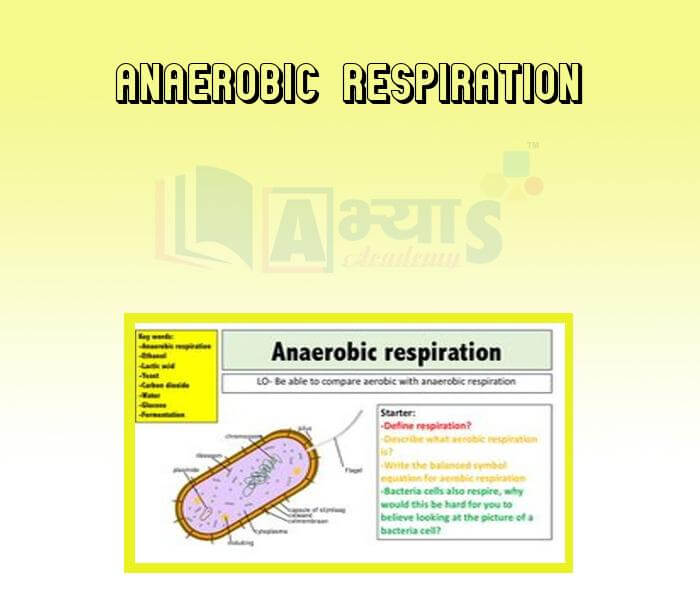Anaerobic Respiration





Anaerobic Respiration
Anaerobic Respiration: The organisms like yeast and some bacteria which carry out aerobic respiration are known as anaerobes. The word anaerobic means in the absence of oxygen. In this process energy is released from food by breaking it down chemically but the reactions do not use oxygen though they often produce carbon dioxide. A common example of anaerobic respiration is the action of yeast on sugar solution. The sugar is not completely oxidized to carbon dioxide and water but is converted to carbon dioxide and alcohol. This process is called fermentation and is shown by the following word equation
Glucose Ethyl alcohol + Carbon dioxide + Energy
The processes of brewing (to make fermented alcoholic beverages) Bread-making rely on anaerobic respiration by yeast. Anaerobic respiration takes place in small steps and needs several different enzymes. The energy produced by anaerobic respiration is much less that produced by aerobic respiration. Besides yeast, certain types of bacteria and some body tissues also respire anaerobically.
Respiratory membrane should be | |||
| Right Option : B | |||
| View Explanation |
In anaerobic respiration pyruvate in the muscles form | |||
| Right Option : A | |||
| View Explanation |
Anaerobic respiration is also called ___________________ | |||
| Right Option : C | |||
| View Explanation | |||
Students / Parents Reviews [10]
About Abhyas metholodology the teachers are very nice and hardworking toward students.The Centre Head Mrs Anu Sethi is also a brilliant teacher.Abhyas has taught me how to overcome problems and has always taken my doubts and suppoeted me.

Shreya Shrivastava
8thIt was good as the experience because as we had come here we had been improved in a such envirnment created here.Extra is taught which is beneficial for future.

Eshan Arora
8thMy experience with Abhyas is very good. I have learnt many things here like vedic maths and reasoning also. Teachers here first take our doubts and then there are assignments to verify our weak points.

Shivam Rana
7thA marvelous experience with Abhyas. I am glad to share that my ward has achieved more than enough at the Ambala ABHYAS centre. Years have passed on and more and more he has gained. May the centre flourish and develop day by day by the grace of God.

Archit Segal
7thAbhyas Methodology is very good. It is based on according to student and each child manages accordingly to its properly. Methodology has improved the abilities of students to shine them in future.

Manish Kumar
10thIt has a great methodology. Students here can get analysis to their test quickly.We can learn easily through PPTs and the testing methods are good. We know that where we have to practice

Barkha Arora
10thIt was a good experience with Abhyas Academy. I even faced problems in starting but slowly and steadily overcomed. Especially reasoning classes helped me a lot.

Cheshta
10thMy experience was very good with Abhyas academy. I am studying here from 6th class and I am satisfied by its results in my life. I improved a lot here ahead of school syllabus.

Ayan Ghosh
8thMy experience with Abhyas academy is very good. I did not think that my every subject coming here will be so strong. The main thing is that the online tests had made me learn here more things.

Hiya Gupta
8thI have spent a wonderful time in Abhyas academy. It has made my reasoning more apt, English more stronger and Maths an interesting subject for me. It has given me a habbit of self studying
